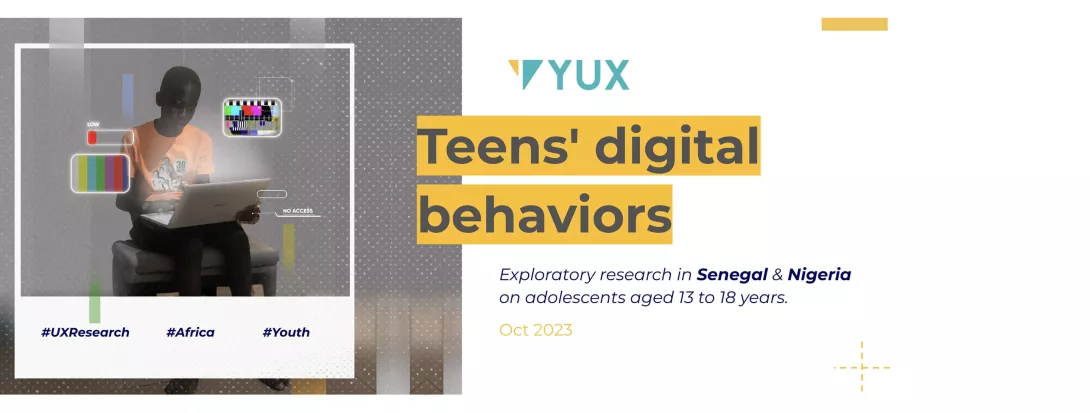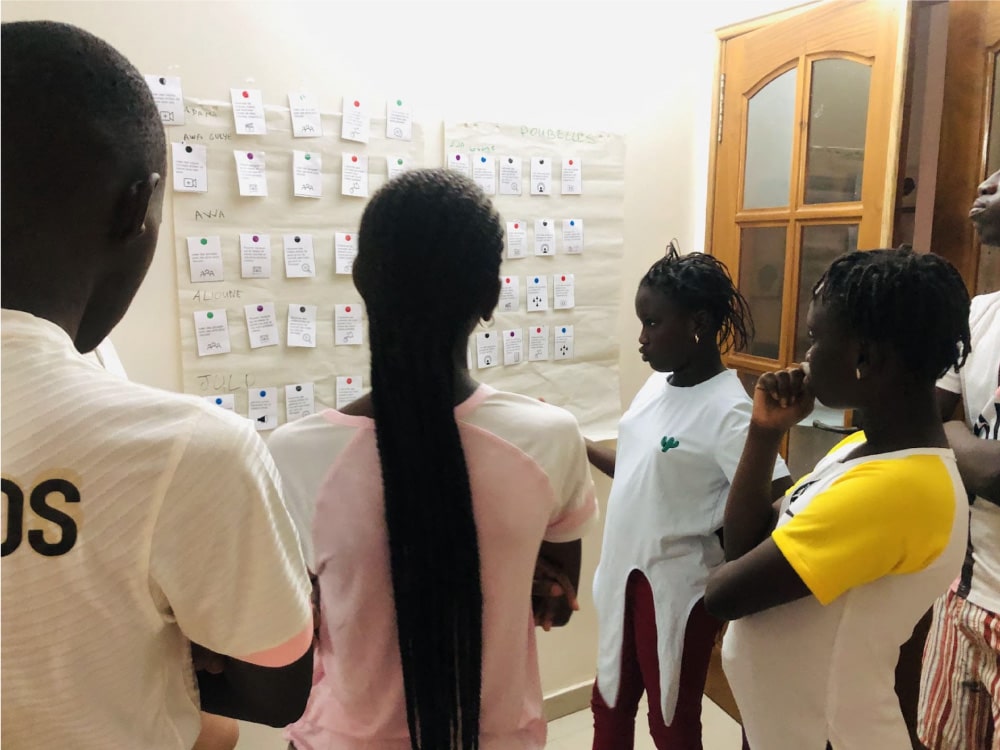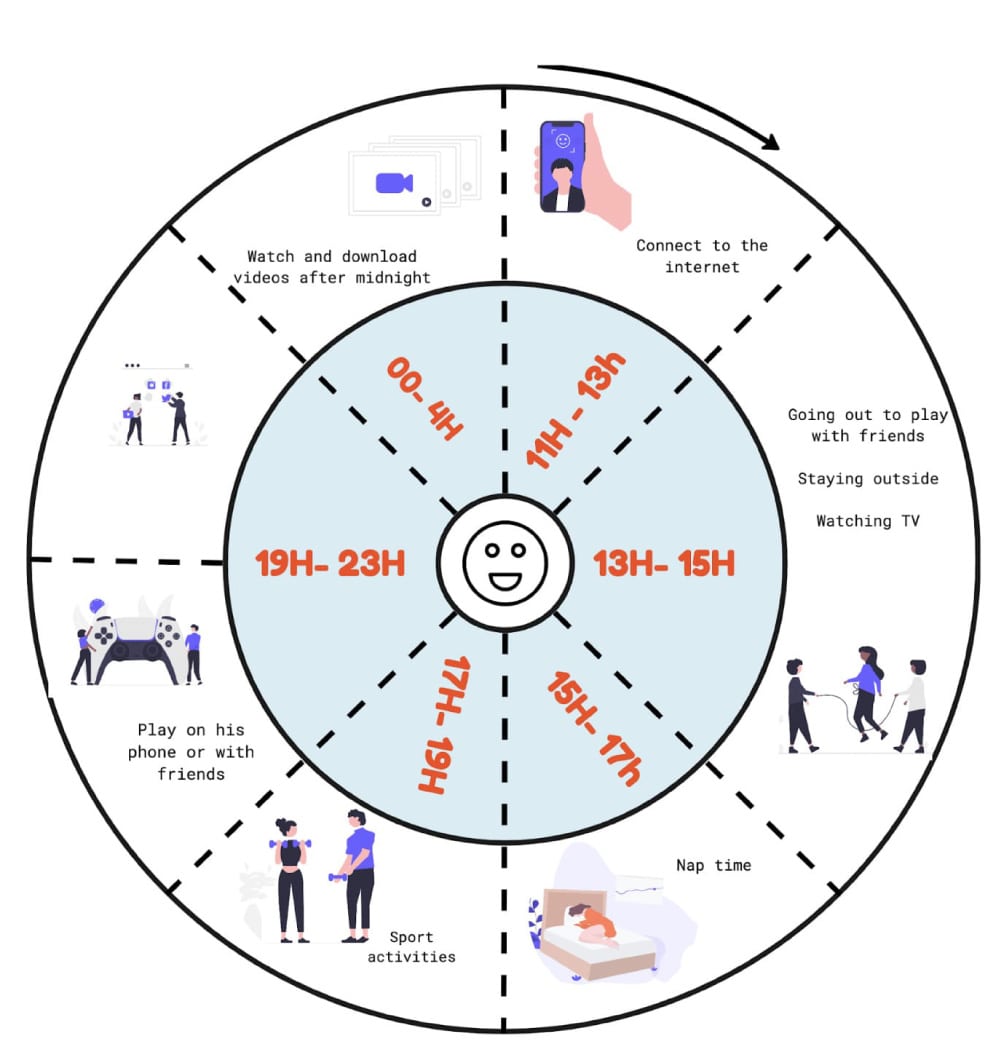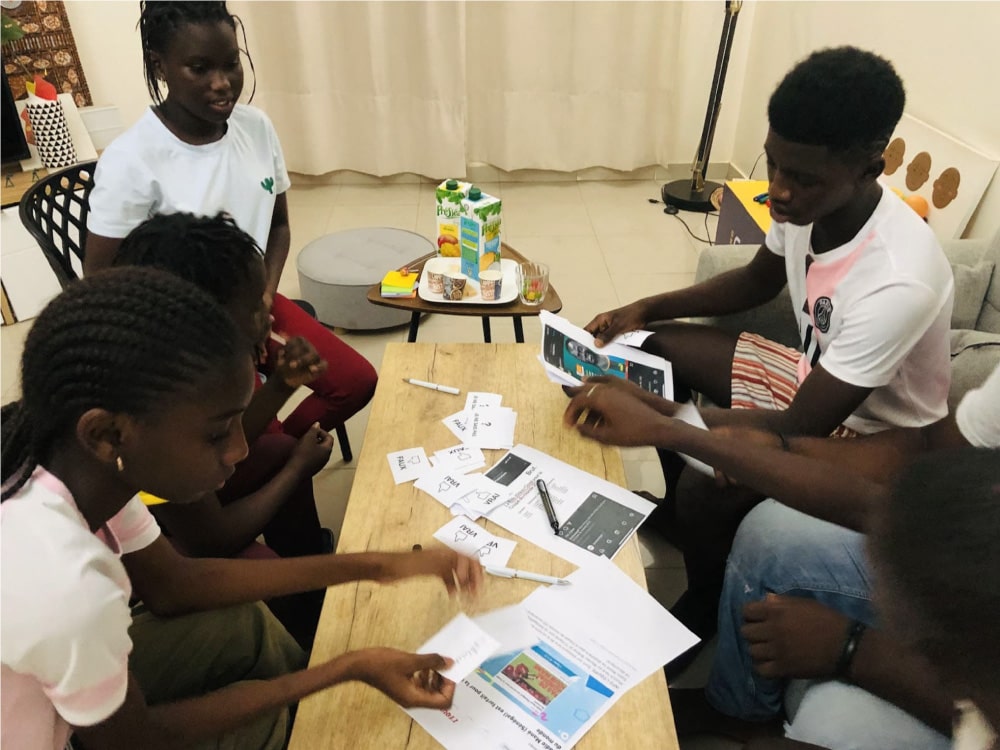
4 Surprising Insights into African Teens' Digital Behavior and key takeaways for NGOs and Technology companies
At YUX we love working with teenagers and kids and help build digital services that protect them (read our case study with Meta here). That’s why earlier this year, we conducted a large public exploratory research among adolescents aged 13 to 18 in Senegal and Nigeria to gain insights into the digital behaviors of African teenagers. In a rapidly evolving digital landscape, this research aims to identify the barriers to digital adoption, understand the needs and pain points of these young users, and provide insights for the development of future digital services. While numerous findings emerged (see the full report here) we will delve into four particularly surprising revelations and the actionable takeaways for international development organizations and tech companies.
Late-night Digital Engagement
Perhaps the most astonishing discovery was the significant increase in digital activity among teenagers after midnight, driven by the availability of free mobile data during these late hours. This nocturnal phenomenon has become a strategy for many young people to circumvent data restrictions during the day. They willingly sacrifice sleep to maximize their internet usage at night.
This revelation challenges the conventional notion of digital usage patterns, highlighting the extent to which these teenagers adapt to the opportunities presented by cost-free nighttime data. It underscores their resourcefulness and determination to harness the benefits of digital technology, even at the expense of sleep.
Self-Teaching and Generation Gap
Another surprising insight stems from the substantial generation gap in digitalization between teenagers and their parents. This discrepancy has positioned older siblings and friends as the de facto digital mentors for their younger counterparts. Consequently, African teenagers are primarily self-taught when it comes to navigating digital devices and addressing the challenges they encounter.
This self-reliance in the digital realm is remarkable and underscores the need for user-friendly interfaces and accessible digital education programs that can empower teenagers with essential digital skills.
Gender Inequalities in Online Safety
A concerning revelation is the stark gender inequalities in online safety. Girls, in particular, are more vulnerable to online harassment, including the sharing of personal pictures. Fear of disrespect within their communities haunts them. Additionally, in rural and peri-urban areas, community awareness of online behavior leads to increased judgment and scrutiny.
Despite these challenges, girls tend not to confide in their parents when facing online harassment, opting to handle the issue independently. This surprising insight underscores the need for targeted initiatives aimed at educating girls about online safety and fostering supportive digital environments.
Local Content Preferences
The study also revealed a striking preference for local content among African teenagers. They exhibited a strong affinity for Senegalese and West African content, with a particular fondness for artists of African origin, such as Dadju and Aya Nakamura. While Western content held some appeal, it took a backseat to their preference for content that resonated with their own culture and identity. This preference for local content highlights the importance of recognizing and promoting African voices and narratives in the digital realm. It also challenges the notion that global content always takes precedence among younger generations.

A card sorting exercise with Senegalese teens on the “ideal social media platform”
Key Takeaways for Tech Companies Targeting African Teenagers
For tech giants like Google, Meta, Wikipedia and others seeking to develop relevant products for African teenagers, the insights from this exploratory research in Senegal and Nigeria offer valuable strategic guidance. Understanding the nuances of digital behaviors among this demographic can lead to more effective product development and engagement strategies.
- Midnight Data Surge: The revelation of increased digital engagement after midnight, driven by free mobile data, presents a unique opportunity. Tech companies should consider optimizing their services to cater to this late-night user base. Developing features or content that resonate during these hours could lead to increased user engagement and loyalty.
- Self-Teaching and Generation Gap: Recognizing the self-reliance of African teenagers in the digital realm is crucial. Designing intuitive interfaces and providing accessible digital education resources can empower them further. Additionally, consider creating platforms that facilitate intergenerational digital learning, bridging the gap between teenagers and their parents.
- Gender-Specific Features: Given the gender inequalities in online safety, tech companies should prioritize safety features and initiatives tailored to the needs of girls. Building platforms that foster supportive and secure online communities for girls can enhance their digital experiences.
- Localization of Content & Experiences: The strong preference for local content, especially artists of African origin, highlights the importance of incorporating African voices and narratives. Invest in partnerships with local creators and content providers to deliver culturally relevant and appealing content to teenagers. Also tailor user interfaces, content recommendations, and language options can help provide a seamless, culturally sensitive experience that fosters user loyalty.
- Digital Education: Recognize the role of technology in education. Develop educational tools and resources that align with the academic needs and preferences of African teenagers. Consider gamified learning platforms, interactive tutorials, and content that enriches their education.
- Parental Guidance and Controls: While respecting teenagers' independence, consider offering parental control features that empower parents to guide their children's digital experiences. Ensure these features are user-friendly and accessible to parents with varying levels of tech literacy.

A day in the digital life of African teenager - during vacations
Key Takeaways for Large NGOs and Development Organizations Focused on African Youth
For large NGOs and development organizations dedicated to improving the lives of African teenagers, the insights from this exploratory research in Senegal and Nigeria provide critical takeaways that can inform strategies and initiatives aimed at youth development in the digital age.
- Digital Literacy Programs: Invest in comprehensive digital literacy programs that cater to the specific needs and challenges faced by African teenagers. These programs should not only teach basic digital skills but also empower them to navigate the digital world safely and responsibly.
- Girls' Empowerment: Recognize the gender disparities in online safety. Implement initiatives focused on empowering girls to confidently and securely navigate the digital landscape. This may include mentorship programs, workshops on online safety, and platforms that promote positive online experiences for girls.
- Academic Enhancement: Leverage technology for educational purposes by developing digital tools and resources that enhance the academic journey of African teenagers. Gamified learning platforms, educational apps, and digital libraries can play a pivotal role in improving access to quality education.
- Digital Inclusion: Ensure that digital inclusion initiatives are accessible to teenagers from diverse backgrounds, including those in rural and underserved areas. Bridge the digital divide by providing access to devices and internet connectivity, especially in regions with limited resources.
- Parental and Community Engagement: Engage parents and communities in discussions about digital literacy and online safety. Equip parents with the knowledge and tools needed to support their children in navigating the digital world responsibly.
- Collaboration with Tech Companies: Partner with tech companies, such as Google and Meta, to develop and promote digital education and safety initiatives. Collaborative efforts can amplify the impact of such programs and ensure that they align with the evolving digital landscape.
- Data-Driven Decision-Making: Utilize data and insights from ongoing research to inform the design and adaptation of programs and interventions. Continuously monitor and evaluate the impact of initiatives to ensure their effectiveness.
- Youth-Led Initiatives: Encourage and support youth-led initiatives that empower teenagers to take an active role in shaping their digital experiences and communities. Amplify youth voices in discussions about digital rights and responsibilities.

Co-creation workshop with Senegalese teens
Conclusion
Incorporating these strategic insights into product development and engagement strategies can position tech companies and NGOS to not only meet the unique needs of African teenagers but also contribute to digital inclusion and empowerment on the continent. They can play a pivotal role in shaping the digital future of Africa while fostering meaningful connections with the next generation of users.
As digital technology continues to play an increasingly significant role in their lives, it is essential to develop tailored digital services and educational initiatives that align with their unique needs and experiences, while also addressing the challenges they encounter in the digital world. Feel free to say hello@yux.design if you want to know more or design products for African teenagers. Talk soon!
Summary of the report written by Yann with the help of ChatGPT
